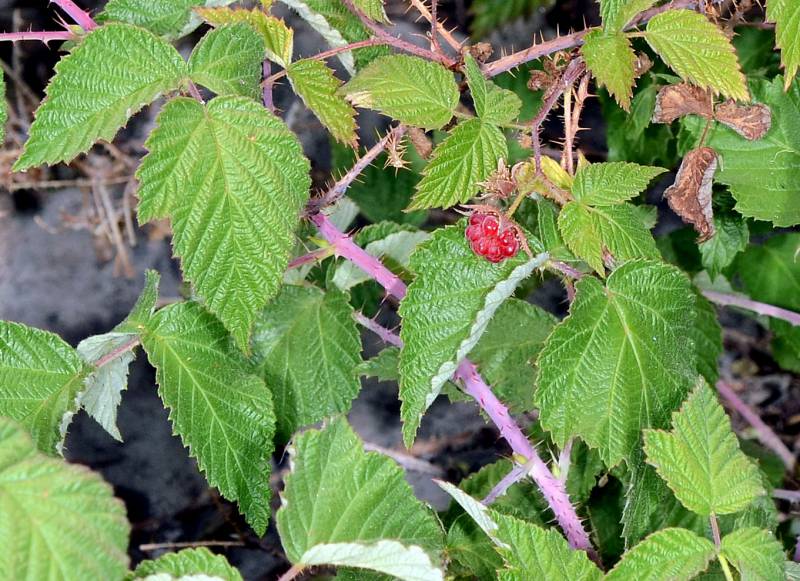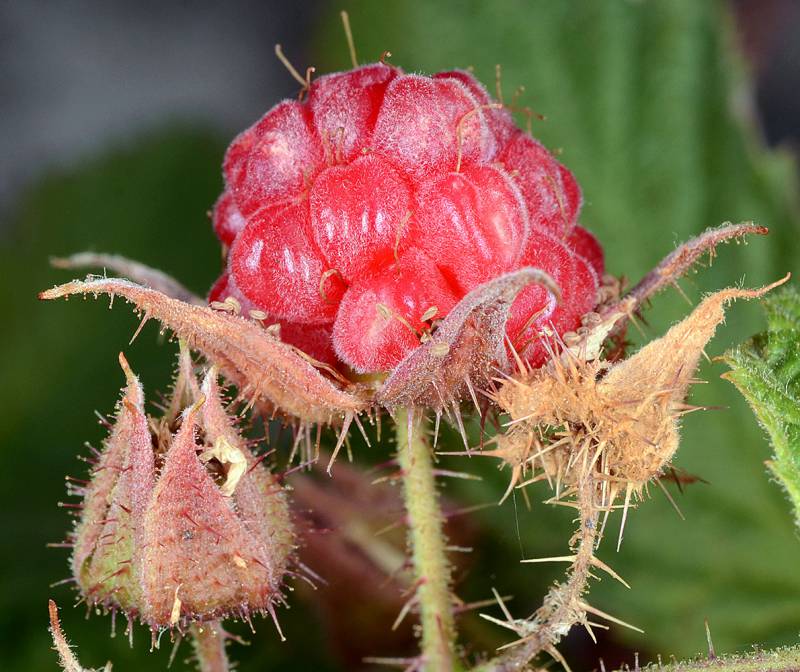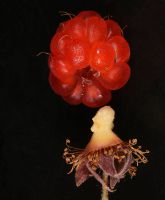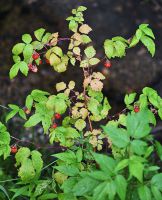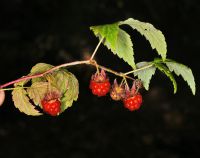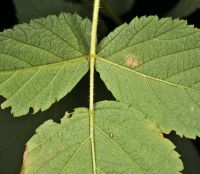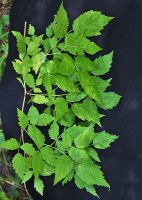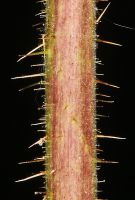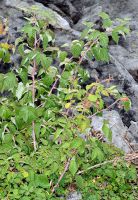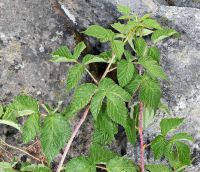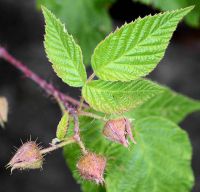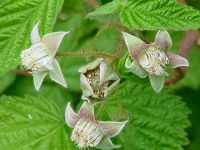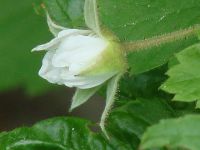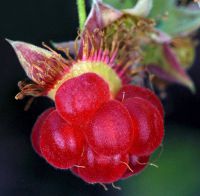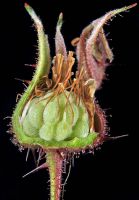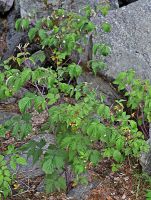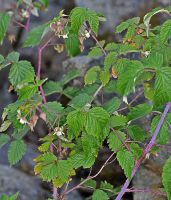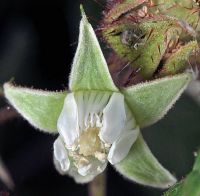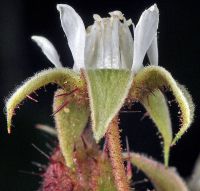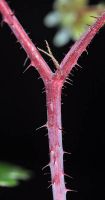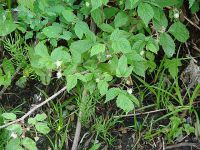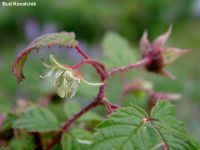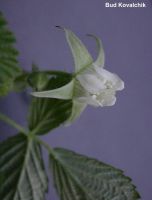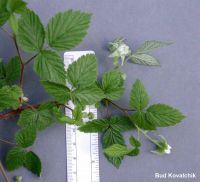Distribution: Occurring chiefly east of the Cascades crest in Washington; Alaska to California, east across most of North America to the Atlantic Coast.
Habitat: Wet or dry woodland to open and often rocky mountain slopes.
Flowers: May-July
Origin: Native
Growth Duration: Perennial
Conservation Status: Not of concern
Pollination: Apomixis, bumblebees, bees, beetles
Strong perennial 1-2 m. tall, more or less bristly and prickly, otherwise glabrous or pubescent, the bark yellow to cinnamon-brown, peeling.
Leaves alternate, usually trifoliate, the leaflets ovate-oblong to broadly lanceolate, 4-10 cm. long, irregularly biserrate, green and glabrous on the upper surface, usually gray-woolly beneath.
Flowers several, 1-4 per axil, forming a leafy, racemose inflorescence; calyx somewhat woolly to bristly-glandular, the 5 lobes reflexed, lanceolate, 4-8 mm. long; petals 5, white, ascending, narrowly oblong, 4-6 mm. long; stamens 75-100, glabrous; pistils numerous, styles slender
Drupelets weakly coherent to form a red raspberry, finely short-woolly.
Publication: Sp. Pl. 1: 492. 1753.
- ssp. idaeus – red raspberry Occurring in scattered locations on both sides of the Cascades crest in Washington; Alaska, and Washington east to Montana, Wyoming, and Utah, east across the northern U.S. to eastern North America.
-
ssp. strigosus – grayleaf red raspberry
 Occurring chiefly east of the Cascades crest in Washington Alaska to California, east across most of North America to the Atlantic Coast.
Occurring chiefly east of the Cascades crest in Washington Alaska to California, east across most of North America to the Atlantic Coast.
PNW Herbaria: Specimen records of Rubus idaeus in the Consortium of Pacific Northwest Herbaria database.
WA Flora Checklist: Rubus idaeus checklist entry.
OregonFlora: Rubus idaeus information.
E-Flora BC: Rubus idaeus atlas page.
CalPhotos: Rubus idaeus photos.
USDA Plants: Rubus idaeus information.


